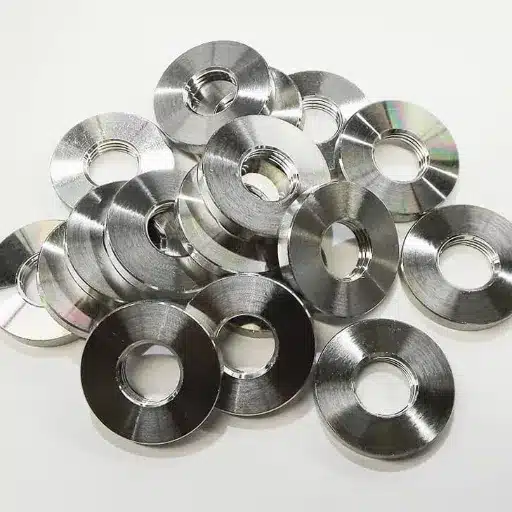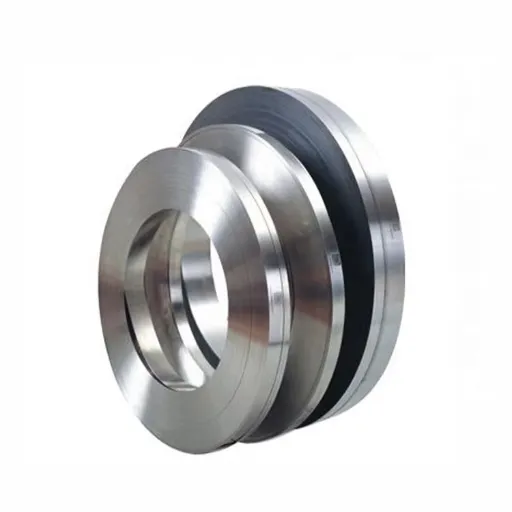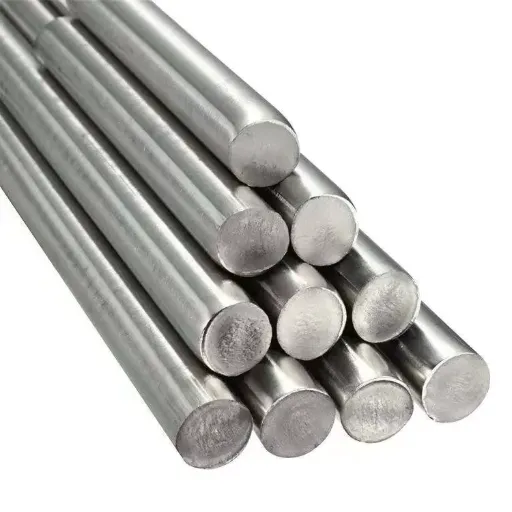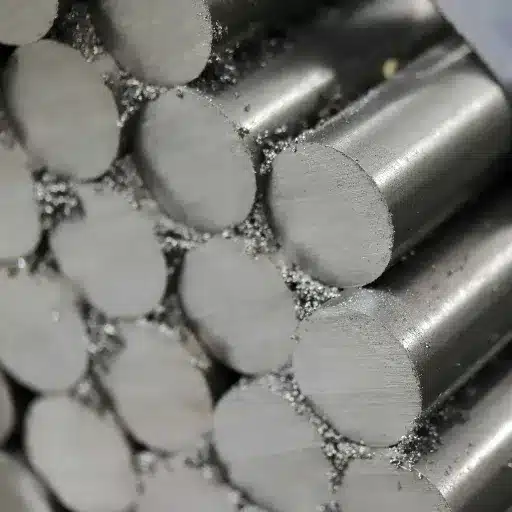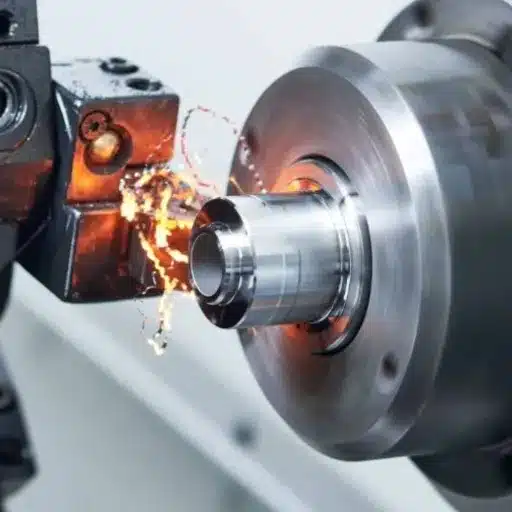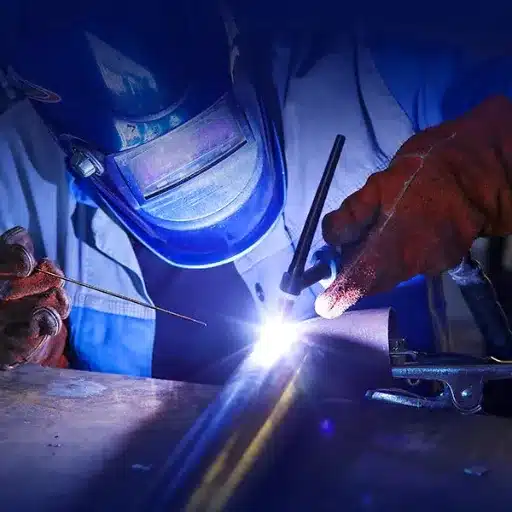For high-performance knives, the choice of blade material can make the difference between a mediocre tool and a credible one. Of the hundreds of steel variants available today, CPM M4 has emerged as a favorite among knife enthusiasts, survivalists, and professional chefs alike. Its acclaim largely rests on the fact that it is perhaps the toughest steel ever known to man, hence, offering outstanding edge retention with exceptional versatility- a real culmination of modern metallurgy. What makes this premium steel grade so special? How can it enrich the highest functionalities of a knife?
This blog aims to dissect the nature that differentiates CPM M4 from all other steels, so that you may come to appreciate why it has been called the best steel for cutting-edge performance. We will discuss its composition, analyze its performance benefits in real situations, and consider its trade-offs so that you can adequately assess them. Equally valuable to a hardcore collector or someone just starting to explore the facets of the knife-making world, this guide will lay out all the insights into CPM M4’s immense potential. Stay glued for the full scoop on this steel wonder!
Introduction to CPM M4 Steel
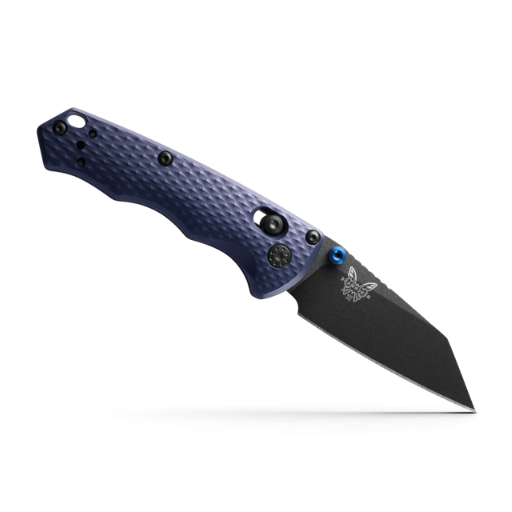
CPM M4 steel is a high-performance steel tool notable for its extreme toughness, wear resistance, and edge retention. It is produced using Crucible’s Particle Metallurgy process, yielding greater uniformity and strength. This steel is suited for heavy-duty applications, such as those in the cutting tool and knife fields, where durability and edge retention are of prime concern. While the CPM M4 finishes exceedingly well, it is not stainless, so some maintenance is needed to prevent rusting. Out of balanced properties, reliability, and longevity, it is the number one choice of enthusiasts.
What is CPM M4?
CPM M4 Tool Steel is a premium-grade tool steel considered among the toughest, with outstanding wear and edge-retention properties. It finds favor in industrial cutting tools, knives, and other highly demanding applications.
History and Development of CPM M4
| Key Point | Details |
|---|---|
| Origin | Developed by Crucible Industries |
| Initial Purpose | Designed for industrial tools like punches and dies |
| Development Process | Created using Crucible Particle Metallurgy (CPM) |
| Key Composition | High carbon, molybdenum, vanadium, tungsten |
| First Use in Knives | Introduced in knives in the mid-2000s |
| Properties | Exceptional wear resistance, edge retention, and toughness |
| Hardness Potential | Can exceed 64 HRC |
| Corrosion Resistance | Low due to only 4% chromium |
| Knife Industry Adoption | Popularized by Benchmade and Spyderco |
| Modern Applications | Used in high-performance knives and tools |
Applications of CPM M4 in Knife Making
CPM M4 is regarded as one of the finest steels for knife making due to its perfect balance of toughness, wear resistance, and edge retention. It is cherished by custom knife-makers and enthusiasts who craft knives for tools that can perform various demanding jobs. The applications of CPM M4 in knife making can be broadly classified into five categories:
- Outdoor and Survival Knives
And CPM M4 makes the perfect outdoor and survival knife; it stays sharp even under intense usage. Indeed, it serves well for hikers, campers, and survivalists who often use it to cut wood, rope, or other materials in the great outdoors.
- Tactical Knives
Superior toughness and edge retention enable it to be used in tactical knives for self-defense or combat applications that require heavy use, yet must maintain peak performance at all times.
- Kitchen Knives
Whether it’s professional chefs or home kitchen cooks, they all use CPM M4 for knife-making purposes. Holding one of the finest edges for an extended period without much sharpening, this steel is perfectly suited for delicate cutting tasks in the kitchen.
- Custom and High-End Knives
Custom knife makers worldwide use CPM M4 steel for their high-end knives, as it lends itself to fine performance and intricate design. Such knives, which often come under the scrutiny of collectors, are sought after as highly performing knives with fine qualities.
- Industrial and Utility Knives
Making industrial knives using CPM M4 resistwear and hard enough for the ultimate application in heavy-duty and repetitive cutting, generally in manufacturing responsibilities.
CPM M4 is one of the most versatile materials for making knives, thanks to its exceptional performance, which is appreciated by both knifemakers and knife users alike.
Composition and Properties of CPM M4 Steel
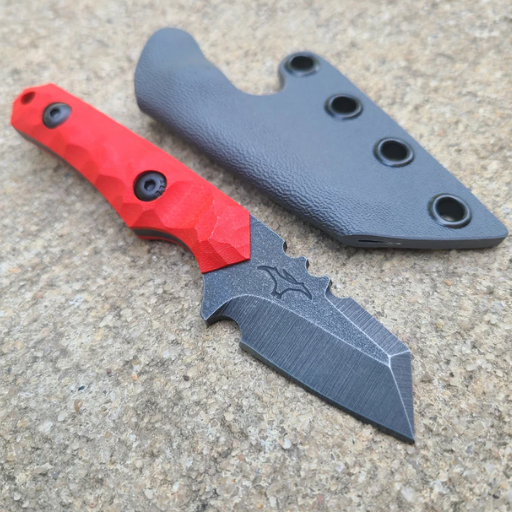
CPM M4 steel is a type of high-speed tool steel, offering an excellent blend of toughness, wear resistance, and edge retention. The key elements featured in it are responsible for optimized performance:
- Carbon at 1.42%, for hardness and strength.
- Chromium at 4.00%, for corrosion resistance and wear resistance.
- Molybdenum at 5.25% imparts toughness and aids in achieving uniform hardness.
- Vanadium at 4.00%, for wear resistance and edge retention.
- Tungsten at 5.50%, for hardness and heat resistance.
For these very reasons, CPM M4 steel finds a great application in areas that demand industrial hardness with utmost cutting efficiency, thus striking a fine balance between durability and the finesse of cutting.
Chemical Composition of CPM M4
CPM M4 is a high-speed tool steel with a famed reputation for extraordinary wear resistance, toughness, and parabolic edge retention. Presented below is the detailed chemical composition of CPM M4, with the latest data in view:
- Carbon (1.30% – 1.45%): It is the principal agent for hardness and strength, with a significant bearing on the steel’s edge-retaining power.
- Chromium (4.00%): Offers corrosion resistance and maintains the steel stability during heat treatment.
- Molybdenum (5.25%): Increases toughness, improves machinability, and imparts uniform hardness to the steel.
- Vanadium (4.00%): Extensively enhances wear-resistant capability, excellent grain structure, and great edge-retaining properties.
- Tungsten (5.50%): Increases hardness to the fullest and resists heat and mechanical deformation during work.
- Sulfur (Optional trace amounts): This element can be added in very tiny amounts to improve machinability without adversely affecting wear resistance or toughness.
Key Benefits of the Chemical Composition:
The interplay amongst these elements is what makes CPM M4 one of the most versatile and durable steels around. The composition is so perfectly balanced that the steel finds application wherever one requires a material that can simultaneously exhibit extreme sharpness and tool life, while maintaining high impact strength. This makes it an industry favorite for instrumentation, high-performance knives, and competitive cutting sports.
Physical Properties of CPM M4
Considered one of the toughest high-speed steels in the world, CPM M4 is endowed with great lateral toughness, wear resistance, and edge retention. Due to the physical properties of CPM M4, it is often used in heavy industrial and high-performance tool applications. Let’s take a look at some properties:
- Hardness: CPM M4 can achieve a Rockwell hardness of approximately 62-68 HRC, depending on the heat treatment used—such a high level of hardness guarantees superior sharpness retention and strength in cutting and tooling operations.
- Toughness: Although hard, CPM M4 is also very tough and capable of resisting chipping or breaking from large loads or impacts. It is essentially the fine and homogeneous distribution of carbides that accounts for this toughness.
- Wear Resistance: Due to its high carbon, vanadium, and molybdenum content, CPM M4 exhibits exceptional wear resistance. This property translates into a longer tool life and less sharpening.
- Density: The density of CPM M4 is approximately 7.98 g/cm³, a typical figure for most high-speed steels, which strikes a good balance between weight and durability.
- Thermal Stability: With the best thermal stability, CPM M4 remains an excellent choice for high feed rate machining or cutting operations that generate high Heat—this resistance to losing hardness tempers its capabilities in harsh environments.
Due to these features, CPM M4 is regarded as one of the best for applications requiring strength, durability, and precision.
Comparison with Other Blade Materials
| Parameter | CPM M4 | CPM S90V | M390 | D2 | 14C28N |
|---|---|---|---|---|---|
| Edge Retention | Excellent | Superior | Excellent | Very Good | Good |
| Toughness | High | Moderate | Moderate | Low | High |
| Corrosion Resistance | Low | Moderate | High | Low | Moderate |
| Ease of Sharpening | Difficult | Very Difficult | Moderate | Difficult | Easy |
| Hardness (HRC) | 62-64 | 60-62 | 60-62 | 58-61 | 58-60 |
| Wear Resistance | Exceptional | Extreme | High | High | Moderate |
| Primary Use | High-performance cutting tools | Premium knives | High-end knives | Budget and semi-stainless knives | Budget and general-purpose knives |
Heat Treatment and Performance of CPM M4
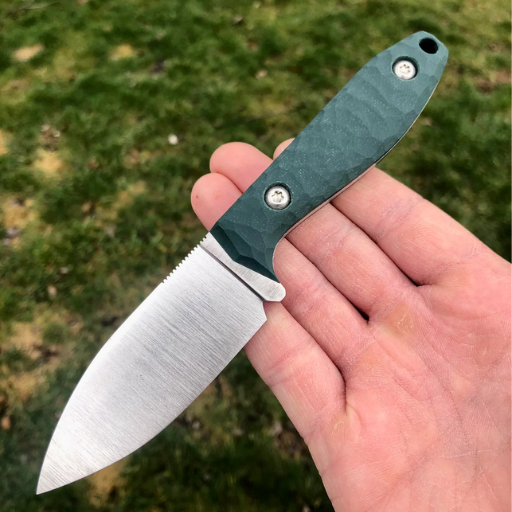
The entire heat treatment process must be adequately performed for CPM M4 to achieve its peak properties. Ideally, one hardens the material by heating it to a temperature between 1900 and 2050°F and then quenching it down to room temperature. Tempering is then performed in the 1000°-1100°F range, thereby achieving a workable compromise between hardness, toughness, and edge retention. When hard heat-treated, CPM M4 achieves remarkably high strength, wear resistance, and thermal stability, making it ideal for demanding applications, such as cutting tools and industrial blades.
Optimal Heat Treatment Procedures for CPM M4
The best mechanical properties can be achieved in CPM M4 if certain rigorous heat treatment practices are followed. Preheating takes place in stages, with the probable last holding usually in the range of 1500-1550°F, depending on the specific requirement for uniform temperature before an austenitizing treatment is performed. The austenitizing temperature range varies between 1900°F and 2050°F, depending on the desired balance of hardness versus toughness for the final product. This step is crucial as at maximum strength, the material retains the best quality through complete carbide dissolution.
Rapid cooling after austenitizing sets hardening. The quenches used are high-pressure gas, oil, or inert atmosphere, with the objective being to render it room temperature as swiftly as possible. Quenching must be followed by tempering for the best performance. Tempering at 1000 to 1100°F provides sufficient toughness and close retention of 62-65 Rockwell hardness.
Recent studies also indicate a double tempering cycle is generally recommended to allow for further microstructural modifications to relax internal stresses and improve impact resistance. For heavier wear applications, tempering within the upper end of the 1050 to 1100°F range can be used to fine-tune hardness and thermal stability. With careful heat treatment, CPM M4 in its heat-treated condition is renowned for its exceptional wear resistance and mechanical stability, outperforming many other tool steels in the most demanding conditions.
Impact of Heat Treatment on Performance
Heat treatment significantly impacts the performance of CPM M4 tool steel, particularly in terms of wear resistance, impact toughness, and hardness. The five key points below show how heat treatment accomplishes the goal of maximizing performance characteristics of the material:
- Enhanced Hardness
Heat treatment increases the hardness of CPM M4 steel. Depending on the tempering treatment, hardness ranges are between 62 and 68 HRC. This protects from wear and deformation in mechanically stressed applications.
- Enhanced Wear Resistance
After the heat treatment, CPM M4 exhibits wear resistance best suited to applications such as cutting tools, dies, and other high-friction environments.
- Improved Toughness
Controlled heat treatment balances relatively high hardness and toughness to withstand chipping and cracking even under heavy impact.
- Thermal Stability
CPM M4 exhibits excellent thermal stability at a tempering temperature of 1,100°F in operational conditions, a feature highly desirable in tooling and machining applications.
- Reduction of Internal Stresses
Heat treatment, when properly executed, reduces internal stresses within the heat-treated material. This reduction in internal stresses minimizes the likelihood of warping or dimensional changes in the material during subsequent manufacturing processes.
These points show how proper control of the heat treatment process enhances the performance of CPM M4 for various other demanding industrial applications.
Durability and Edge Retention of CPM M4
Durability and edge retention are among CPM M4’s most notable features. Consequently, it has gained fame for its high-performance and industrial-grade tools. Elaborated below are five points detailing these characters:
- Wear Resistance:
CPM M4 has a uniform microstructure with very fine carbides, imparting an extremely high degree of wear resistance. Thus, it offers a longer service life to tools made from it, even when cutting very hard materials.
- High Hardness
When heat-treated properly, it can achieve a hardness of up to 65 HRC, enabling it to maintain a sharp edge for a longer period with continued use.
- Toughness
Being hard, it still remains reasonably tough and can be used for applications where high impacts present a risk of chipping or breaking.
- Good Edge Stability
With edge stability, CPM M4 performs well, thanks to its fine-grained structure, which prevents the edge from deforming under applied pressure.
- Corrosion Resistance
It is not, however, as corrosion-resistant as stainless steels, but does provide moderate corrosion protection if taken care of properly, and hence can last fairly well in adverse conditions.
These properties make CPM M4 an excellent choice for applications that require dependable performance, durability, and edge retention under challenging conditions.
CPM M4 vs Other Knife Steels
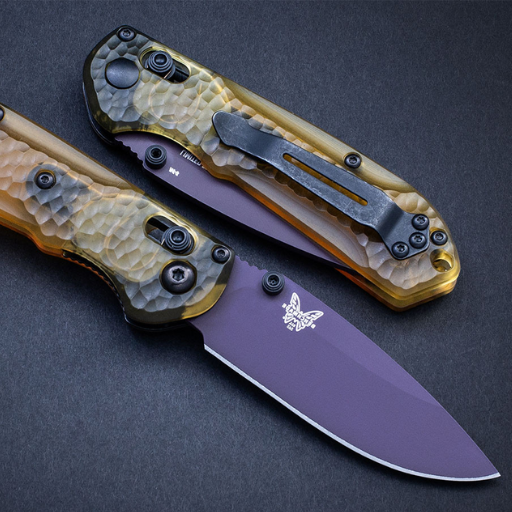
The CPM M4 holds a reputation in the knife world for its edge retention and wear resistance, with few steels able to compare. It does not possess the corrosion resistance of steels like CPM S30V or S35VN; however, its strength and wear-resisting qualities make it apt for rigorous operations. When used continuously under heavy tasks, unlike softer steels, CPM M4 tends to resist edge loss, thereby minimizing the need for sharpening intervals. For the same reasons, though, it needs to be vigilantly wiped and oiled to avert any rusting, especially in humid and wet environments. If corrosion resistance is not the primary consideration and you seek cut durability, CPM M4 is one of the best steels available.
Comparison with 1095 Carbon Steel
| Parameter | CPM M4 | 1095 Carbon Steel |
|---|---|---|
| Edge Retention | Excellent | Moderate |
| Toughness | High | Very High |
| Corrosion Resistance | Low | Very Low |
| Ease of Sharpening | Difficult | Easy |
| Hardness (HRC) | 62-64 | 55-60 |
| Wear Resistance | Exceptional | Low |
| Primary Use | High-performance tools and knives | Heavy-duty, survival knives |
| Maintenance Needs | Requires oiling to prevent rust | Requires frequent oiling |
| Cost | Expensive | Affordable |
| Durability | Long-lasting under heavy use | Durable but prone to rust |
CPM M4 vs S90V and CPM 3V
| Parameter | CPM M4 | S90V | CPM 3V |
|---|---|---|---|
| Edge Retention | Excellent | Superior | Good |
| Toughness | High | Moderate | Very High |
| Corrosion Resistance | Low | Moderate | Low |
| Ease of Sharpening | Difficult | Very Difficult | Moderate |
| Hardness (HRC) | 62-64 | 60-62 | 58-60 |
| Wear Resistance | Exceptional | Extreme | High |
| Primary Use | High-performance cutting tools | Premium knives | Heavy-duty, impact tools |
| Durability | Long-lasting under heavy use | Long-lasting with care | Extremely durable |
| Best Feature | Balance of toughness and wear | Outstanding edge retention | Exceptional toughness |
Advantages of CPM M4 Over Traditional Tool Steels
| Parameter | Advantage of CPM M4 |
|---|---|
| Edge Retention | Superior due to high wear resistance |
| Toughness | Higher toughness for demanding tasks |
| Wear Resistance | Exceptional, resists abrasive wear effectively |
| Hardness (HRC) | Achieves higher hardness levels (62-64 HRC) |
| Carbide Distribution | Uniform due to powder metallurgy process |
| Durability | Longer lifespan under heavy use |
| Cutting Performance | Maintains sharpness for extended periods |
| Versatility | Suitable for industrial and knife applications |
| Heat Resistance | Retains hardness at high temperatures |
| Precision | Easier to grind and finish precisely |
Maintaining and Caring for CPM M4 Blades
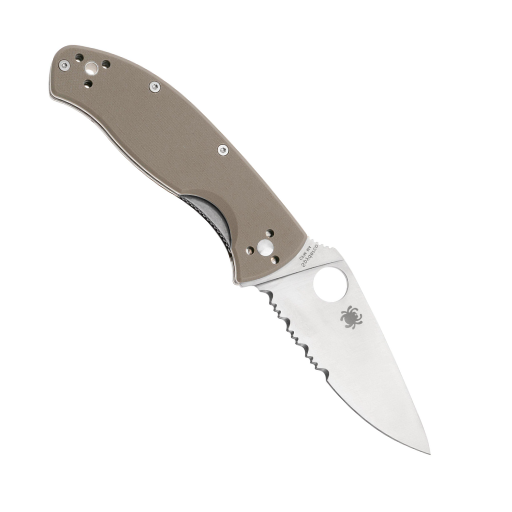
Cleaning and maintenance need periodic touchups to keep the CPM M4 knife in prime condition. Since CPM M4 is not stainless, it rusts and corrodes when exposed to moisture or humidity. After use, wipe the blade with a dry cloth if it is moist, and ensure it is dry before storing. Apply a thin coat of high-quality oil to protect the blade from rust formation. If dull, sharpen the blade with a whetstone or another suitable sharpening tool for high-hardness steel. Proper care extends the life span and keeps the blade sharp during use.
Sharpening Techniques for CPM M4
To sharpen CPM M4, high-quality whetstones or diamond sharpening stones are preferable. I match the grit to that suitable for the amount of wear on the blade. The angle of sharpening must correspond to that of the original bevel for optimal performance; typically, this is between 15 and 20 degrees per side. Keeping the pressure even, I make very deliberate, smooth strokes on the stone until the edge is sharp. I can then continue with a finer-grit stone or a leather strop for polishing, which provides the final razor finish to the edge. I constantly test my progress, methodically proceeding through every phase, and ensure that I don’t eliminate too much material.
Storage and Maintenance Tips
- Keep Blades Clean and Dry
After a quick use, wash it thoroughly to ensure no moisture remains. Moisture will surely rust and corrode. Clean blades ensure longer life and better performance.
- Store in a Dry Environment
Store them in a cool, dry place, away from moisture and direct sunlight. You may want to bring in silica gel or a dehumidifier to keep moisture levels down.
- Use Blade Covers or Sheaths
When not in use, always put your blade in a protective cover or sheath to prevent it from being damaged by accident or accidentally dulling. It also shields you from accidental cuts when handling it.
- Oil the Blade Regularly
Oil your blade periodically with a thin layer of oil to maintain its good condition and prevent rusting. Kitchen knives especially benefit from a thin application of food-safe mineral oil.
- Avoid Harsh Conditions
Never leave blades in extreme temperatures or exposed to chemicals, which erode and weaken the material. A bit of care in handling can help avoid undue wear over time.
Common Mistakes to Avoid
| Aspect | Maintenance Tip | Common Mistake to Avoid |
|---|---|---|
| Cleaning | Wipe blade clean and dry after each use | Leaving blade wet or dirty |
| Oil Application | Use mineral oil or food-safe oil sparingly | Using non-food-safe oils for food prep |
| Corrosion Prevention | Apply a thin protective oil layer | Ignoring oil application in humid areas |
| Patina Formation | Allow natural patina for added protection | Forcing patina improperly |
| Storage | Store in a dry, ventilated area | Storing in damp or sealed environments |
| Sharpening | Use diamond or high-quality sharpening tools | Using improper or low-quality tools |
| Food Contact | Use food-safe oils like mineral oil | Using vegetable oils that can turn rancid |
| Rust Management | Address rust spots immediately with polish | Ignoring small rust spots |
| Pivot Area Care | Oil pivot area lightly and work it in | Over-oiling or neglecting the pivot area |
| Environmental Use | Avoid prolonged exposure to saltwater | Using in harsh environments without care |
References
- Heat treatment effects on CPM-M4 tool steel performance as edged blade material
This study explores the performance of CPM-M4 tool steel, focusing on its hardness and toughness.
Link to source - Heat treatment effects on the mechanical properties and microstructure of CPM-M4 tool steel
This research examines the changes in microstructure and mechanical properties of CPM-M4 tool steel during heat treatment.
Link to source - A system-theory approach to decompose CPM signals into PAM waveforms
While this source focuses on CPM signals in communication systems, it may provide insights if your context involves signal processing.
Link to source
Frequently Asked Questions (FAQ)
What is CPM-M4, and what is its carbon steel information and composition?
CPM-M4 is a high-performance tool steel known for its excellent toughness and wear resistance. It is an alloy steel that contains high carbon content, along with elements like molybdenum and vanadium, which enhance its properties. The composition allows CPM-M4 to maintain a sharp edge while providing durability, making it a popular choice among knife makers.
How does the heat treatment process affect CPM-M4 blade steel?
The heat treatment process is crucial for CPM-M4, as it involves austenitizing and tempering to optimize its hardness and toughness. Following the heat treat recipe, which includes specific temperatures and quenching methods, allows the steel to harden effectively, resulting in a blade that exhibits excellent edge retention and wear resistance.
What are the toughness and edge-holding capabilities of CPM-M4 compared to other stainless steels?
CPM-M4 exhibits superior toughness and edge holding capabilities compared to many stainless steels, making it ideal for heavy-duty applications. Its high carbide volume contributes to the steel’s ability to maintain a sharp cutting edge under stress, which is often a challenge for other stainless steel alloys.
Can you explain the tempering temperature for CPM-M4 and its impact on knife performance?
Tempering temperature for CPM-M4 typically ranges between 400°F and 600°F, depending on the desired hardness and application. Proper tempering reduces brittleness while enhancing toughness, allowing the knife to withstand impact without chipping, thus improving overall performance in cutting tasks.
What is the significance of alloy composition in CPM-M4 and other tool steels?
The alloy composition in CPM-M4, which includes elements like molybdenum and vanadium, significantly impacts its properties. These alloys enhance the steel’s hardness, toughness, and wear resistance, making it a suitable choice for manufacturing high-performance knives compared to standard carbon steel or other tool steels like CPM-3V or CPM-154.
How does CPM-M4 compare to other knife blade materials like CPM-154 and CPM-S90V?
CPM-M4 is often compared to other knife blade materials such as CPM-154 and CPM-S90V. While CPM-154 offers excellent corrosion resistance and edge retention, CPM-M4 stands out for its toughness and ability to handle heavy-duty applications. CPM-S90V, on the other hand, excels in edge retention but may not match the toughness of CPM-M4.
What is the role of carbon steel information and composition in choosing knife steel?
Understanding the information and composition of carbon steel is critical when selecting knife steel. It helps in determining the steel’s characteristics, such as hardness, toughness, and edge retention. For instance, high carbon content in steels like CPM-M4 allows for better hardening and wear resistance, making it favorable for serious knifemaking.
What are the recommended heat-treating practices for achieving the best results with CPM-M4?
Recommended heat treating practices for CPM-M4 include using proper austenitizing and quenching methods to achieve optimal hardness, typically resulting in a hardness of 62-64 HRC. Following the heat treat recipe closely ensures that the steel hardens effectively and maintains excellent edge characteristics, making it a superior choice for knife enthusiasts.

